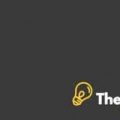
Introduction
The Common wealth Blood Transfusion service “CBTS” is operating in the industry of Blood Donations. The company has made a name of itself in the blood transfusion industry. This service company was incorporated in the year 1950 with gathering the blood donation across half million of people. They fulfilled the demand of the clinic with their expert discussion about the blood and their traits. The donor of the blood are happy in their voluntarily service of their blood.
It has comprises of three Regional Centre and one Plasma Fractionation Plant (hereafter referred as PFP). Regional Centre is responsible for donor contact, blood collection, testing and grouping. The further process will be dealt in the PFP. The PFP upholds four types of inventory which is Coagulation factors, Immunoglobulins-Intramuscular, Immunoglobulins-Intravenous and Albumin products. Further, the PFP uses different chemicals for keeping its inventory level which includes powder, liquid and solid forms under three categories. The category are International Units (IU), Weight (Mg) and Liquid Volume (Ml).
The basic costing system of the company belongs to the budgeting level with conveying the government officials. On that costing method they produce the report which is known as the Management Statement. After their issuance of the report, they compare their cost with actual spending of the company and gives pros and cons for the future guidance.
The “CBTS” is a public body which constitutes of the government, health association and blood donors which is giving the edge to the company.
Overview of the Current Market Methodology for Determining the Product
In the cost methodology, there are two approaches which are the conventional method of the costing. The first approach is the common approach which is widely known as process costing; it covers the single process raw material and joint process raw material. Basically, this approach is used in the mass production in most of the cases. This process examines the net cost of the business procedure like making the juice and afterward into the glass over a stated age of time. Furthermore, the unit cost for making the juice is simply the net cost while making the fruit through the juicer divided by the number of glasses made from the fruits. However, many of business procedures have more processes in the single step, like these calculations is made through separately step to reach a unit cost regular for the whole production structures.
On the other hand, the 2nd approach of the costing is the job-order which is concerned about the individual batch with separately identifiable cost of the product for the individual entity. This is the very useful approach where each unit of production is modified. This costing techniques belongs to, where there are very low number of units produced such as ships, airplanes and development of pianos.
In the job order costing, the direct cost occurs to particular units in the production and they are not inescapably averaged with the any other units in the same time. Job order costing techniques is mostly used in the outsourced manufacturing companies where a single running both approaches to complete the targets for the customers. This would an essential tools for the organization to help in the level of difficulties. These are things which currently evolving in the economy.
Challenges Statements
The company currently is following the budgeting costing strategy with comparing the actual spending of the company. The main challenges is to handle the inventory level with adequate allocation of the cost toward each product. The existing cost method is beneficial for the company because it is not addressing the cost allocation with their respective basis.
The company needs such permission of the changes of the costing method from the government and health association. The health association is the watch dog for the health client. They verify each and every aspects which relates to the costing and health side. Right now the company has four method for allocating the cost of the product which are total process hour method, total volume method, total units method and total sales volume method.
Now the company has to identify new method of the costing which could give benefits to the company and their stakeholders. This would also benefits in the better production results and reduce the cost level. This would help in increasing the sales and profits margins. The important thing in any organization is ways of allocating the cost because this is the basis where all function are attached with it such as profits, customer cost, internal growth and competitive edge................
This is just a sample partial case solution. Please place the order on the website to order your own originally done case solution.
For the first time, blood transfusion service of the Commonwealth (CBTS) must determine the value of the product to display the center of the plasma fractionation. The motivation for the determination of the cost of production is political. Thus, CBTS has to find a way to tell the individual cost of production, despite the fact that they are joint products. Due to the political motivation, CBTS leaders can not claim that there is no meaningful way of allocating joint costs for products. The case provides students with an opportunity to identify several procedures to determine the distribution of joint costs, and then use these procedures to determine the cost of production. "Hide
by Robin Cooper, Falconer Mitchell Source: Harvard Business School 15 pages. Publication Date: November 13, 1990. Prod. # 191 087-PDF-ENG











